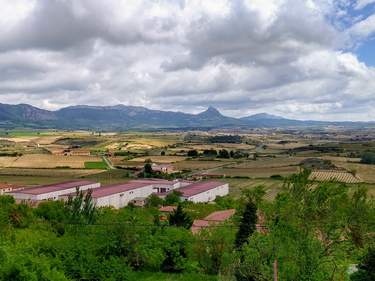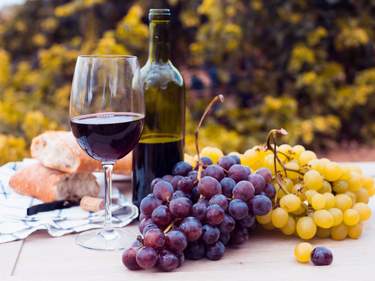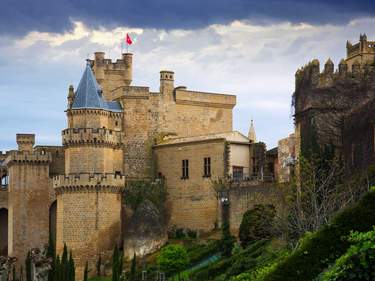Planning your own trip? Prepare for your trip
Use Rough Guides' trusted partners for great rates
Book your individual trip, stress-free with local travel experts
Look beyond the cliches of paella, sangria, and siesta and you're sure to get the best out of your travels to Spain in this amazingly diverse country. Even in the most over-touristed resorts of the Costa del Sol, you'll be able to find an authentic bar or restaurant where the locals eat, and a village not far away where an age-old bullfighting tradition owes nothing to tourism.
The large cities of the north, from Barcelona to Bilbao, have reinvented themselves as essential cultural destinations (and they don't all close down for hours for a kip every afternoon). When the world looks to Spain for culinary inspiration - the country has some of the most acclaimed chefs and innovative restaurants in the world - it's clear that things have changed. Spain, despite the ongoing economic uncertainty, sees itself very differently from a generation ago. So should you - be prepared to be surprised.
Spain’s cities are among the most vibrant in Europe. Exuberant Barcelona, for many, has the edge, thanks to Gaudí’s extraordinary modernista architecture, the lively promenade of the Ramblas, five kilometres of sandy beach and the world’s best football team. The capital, Madrid, may not be as pretty, but it claims as many devotees – immortalized in the movies of Pedro Almodóvar, and shot through with a contemporary style that informs everything from its major-league art museums to its carefree bars and summer cafés. Then there’s Seville, home of flamenco and all the clichés of southern Spain; Valencia, the vibrant capital of the Levante, with a thriving arts scene and nightlife; and Bilbao, a not-to-miss stop on Spain’s cultural circuit, due to Frank Gehry’s astonishing Museo Guggenheim.
Not only are Spain’s modern cities and towns lively and exciting, they are monumental – literally so. History has washed over the country, adding an architectural backdrop that varies from one region to another, dependent on their occupation by Romans, Visigoths or Moors, or on their role in the medieval Christian Reconquest or in the later Golden Age of imperial Renaissance Spain. Touring Castilla y León, for example, you can’t avoid the stereotypical Spanish image of vast cathedrals and hundreds of reconquista castles, while the gorgeous medieval university city of Salamanca captivates all who visit. In northerly, mountainous Asturias and the Pyrenees, tiny, almost organically evolved, Romanesque churches dot the hillsides and villages, while in Galicia all roads lead to the ancient, and heartbreakingly beautiful cathedral city of Santiago de Compostela. Andalucía has the great mosques and Moorish palaces of Granada, Seville and Córdoba; Castilla-La Mancha boasts the superbly preserved medieval capital of Toledo; while the harsh landscape of Extremadura cradles ornate conquistador towns built with riches from the New World.
The Spanish landscape, too, holds just as much fascination and variety as the country’s urban centres. The evergreen estuaries of Galicia could hardly be more different from the high, arid plains of Castile, or the gulch-like desert landscapes of Almería. In particular, Spain has some of the finest mountains in Europe, with superb walking – short hikes to week-long treks – in a dozen or more protected ranges or sierras – especially the Picos de Europa and the Pyrenees. There are still brown bears and lynx in the wild, not to mention boar, storks and eagles, while a near-five-thousand-kilometre coastline means great opportunities for fishing, whale-watching and dolphin-spotting.
Agriculture, meanwhile, makes its mark in the patterned hillsides of the wine- and olive-growing regions, the baking wheat plantations and cattle ranches of the central plains, the meseta, and the rice fields of the eastern provinces of Valencia and Murcia, known as the Levante. These areas, although short on historic monuments and attractions, produce some of Spain’s most famous exports, and with the country now at the heart of the contemporary European foodie movement, there’s an entire holiday to be constructed out of simply exploring Spain’s rich regional cuisine – touring the Rioja and other celebrated wine regions, snacking your way around Extremadura and Andalucía in search of the world’s best jamón serrano (cured mountain ham), or tucking into a paella in its spiritual home of Valencia.
And finally, there are the beaches – one of Spain’s greatest attractions, and where modern tourism to the country began in the 1960s. Here, too, there’s a lot more variety than the stereotypical images might suggest. Long tracts of coastline – along the Costa del Sol in Andalucía in particular – have certainly been massively and depressingly over-developed, but delightful pockets remain, even along the biggest, concrete-clad costas. Moreover, there are superb windsurfing waters around Tarifa and some decidedly low-key resorts along the Costa de la Luz. On the Costa Brava, in the northeast in Catalunya, the string of idyllic coves between Palamos and Begur is often overlooked, while the cooler Atlantic coastline boasts the surfing beaches of Cantabria and Asturias, or the unspoilt coves of Galicia’s estuaries. Offshore, the Balearic Islands – Ibiza, Formentera, Mallorca and Menorca – also have some superb sands, with party-fuelled Ibiza in particular offering one of the most hedonistic backdrops to beachlife in the whole Mediterranean.
Hedonism, actually, brings us full-circle, back to one of the reasons why Spain is pretty much irresistible and infectious. Wherever you are in the country, you can’t help but notice the Spaniards’ wild – often over-bearing – enthusiasm for having a good time. Festival time is a case in point – these aren’t staid, annual celebrations, they are raucous reaffirmations of life itself, complete with fireworks, fancy dress, giants, devils, bonfires, parties, processions and sheer Spanish glee. But even outside fiesta time there’s always something vibrant and noisy happening – from local market to late-night bar, weekend football match to beachside dance club. Meals are convivial affairs – not for most Spaniards the rushed sandwich or chain-restaurant takeaway – and long lunches and late dinners are the norm throughout the country. And with family at the heart of Spanish society, there’s a genuine welcome for, and interest in, you and yours, whether at resort hotel or rustic guest house. “A pasarlo bien!” (Have a good time!), as the Spanish say.
Although the summer months are beautiful along the coasts, thanks to the cooling breeze, the heat can be unbearable in inland areas such as Seville and Madrid. The best time to visit Spain is generally during spring and autumn when the weather is warm and pleasant, yet not uncomfortable. For an in-depth view of the Spanish weather, visit our weather page.
With multiple beautiful cities and coastal towns to discover in Spain, creating an itinerary can be quite a task. Although holiday packages seem to dominate the tourism industry in Spain, if you would like to explore the country with a tailor-made plan, Rough Guides can help! Below, we've created you an itinerary with a splendid mix of city, sun and culture. For a more specific route, we've made some itineraries which round up the best routes depending on what you are wanting on your travels to Spain.
Meet your Spain local travel expert

9 days / from2491 USD
Andalucía Explored
Discover the best of Andalucía's breathtaking palaces, churches, museums, vineyards, and more, as you travel through spectacular scenery dotted with pueblos blancos and bordered by rugged mountains and coast en route to Granada, Seville, Ronda and Jerez de la Frontera.
view tour ⤍
4 days / from649 USD
A culinary experience in Seville
Explore the cuisine and surroundings of Seville in Andalucia. From Iberian ham over sherry wines to the production and secrets of olive oil, this tour is an ideal weekend getaway. Decide yourself if you prefer a rental car or a chauffeur-driven car to explore the beauty of Andalucia.
view tour ⤍
10 days / from3826 USD
Spanish Honeymoon
Discover Andalusia, starting with the cultural city of Seville, then on to Córdoba and Granada, home of the stunning Alhambra Palace. Next you'll visit Granada and the Albayzin Arab quarter, then enjoy a stunning hot-air balloon ride, before ending your trip with a luxury boat trip from Marbella!
view tour ⤍
5 days / from1493 USD
Made for Madrid
Take to the Spanish capital for art, culture and a taste of life in the city, Madrileño-style. Explore age-old churches and pretty plazas, stroll through the lovely Buen Retiro Park and visit captivating Toledo. Then, come sundown, discover the city's vibrant barrios and lively nightlife.
view tour ⤍
4 days / from1412 USD
A Madrid getaway
Spend four days discovering the wonders of Spain's capital Madrid: from fascinating museums like El Prado and Reina Sofia over exploring unknown corners with your private guide to a day trip to the surroundings, this itinerary packs the best of Madrid.
view tour ⤍
18 days / from4633 USD
Hidden Spain - From Barcelona to Basque Country
Do you want to explore highlights in Spain while staying in nature at the same time? Look no further. Start your Spanish adventure in Barcelona before heading off to the mountains - drive your rental car to Andorra and further on to Basque Country. Decide between driving yourself or guided tours.
view tour ⤍
8 days / from2382 USD
Andalucía by Car
Enjoy this road trip through Spain’s exuberant Andalucía, which will take you through the charming cities of Malaga, Seville, Granada and various 'white villages', including Ronda, with its vertiginous views across the sweeping Andalucían countryside.
view tour ⤍
5 days / from1733 USD
The Lands of Wine from Madrid
Spain is well known for its amazing wines and this itinerary allows you to explore two famous regions: Ribera del Duero and La Rioja. Four different wineries, from traditional to modern, and many restaurants on the way await your visit.
view tour ⤍
9 days / from1504 USD
The Cities, Mountains and Beaches of Northern Spain
Southern Spain has been a busy tourist destination for many years. This self-drive trip avoids the touristy area along the southern Spanish coast, instead opting to take in the culture of the north and its natural beauty and the rugged beaches and coast.
view tour ⤍
4 days / from910 USD
Simply Seville
Make the most of a city break in one of Spain's most atmospheric cities. The home of flamenco, Seville is a veritable feast for all the senses. Come here for the tantalising cuisine and fragrant orange trees, awe-inspiring Gothic cathedral, pretty plazas and many excellent museums and galleries.
view tour ⤍
13 days / from6633 USD
Cultural Cities of Spain
From Barcelona down to Granada in the deep South, see the best of Spain on this multi-city tour that takes in Madrid, Córdoba and Seville, too. Get to grips with Gaudí, see historic Toledo, wander through the Prado, see the Alhambra, and more on this cultural extravaganza of Spain's finest cities.
view tour ⤍
7 days / from2175 USD
The tale of two cities: Madrid and Barcelona
Explore the capital of Spain Madrid with a unique city tour before heading about an hour outside of the city, to visit Europe's longest zip-line in historic Toledo. Afterwards, board a train to explore the second-largest city of Spain, Barcelona.
view tour ⤍
4 days / from1553 USD
A weekend getaway to Malaga
Malaga is a coastal city in Andalusia, right on the famous 'Costa del Sol'. This weekend getaway allows you to explore the city, as well as the well-known surrounding cities of Ronda and Marbella. Yellow sand beaches, fascinating museums and a delicious cuisine await to be discovered.
view tour ⤍
4 days / from1597 USD
City break Valencia
Spain's third largest city offers a beautiful old city quarter, plentiful history and a vibrant culture to be discovered. Palaces, museums and a rich cuisine make Valencia an attractive weekend getaway destination, as does the nearby wine region of Requena.
view tour ⤍
12 days / from4049 USD
Iconic Cities of Spain: Madrid, Seville, Valencia and Barcelona
Spend a wonderful 12 days exploring the best that Spain has to offer on a trip including city tours of historical Madrid, Granada, Seville, Valencia, and Barcelona. Enjoy palatial-style boutique accommodation throughout the holiday, and savour delicious cuisine and regional wine. Be inspired!
view tour ⤍
29 days / from9330 USD
From the South to the North - a Spanish Immersion
The ultimate trip for Spain lovers - explore the country at a leisurely pace from the South to the North. Start in Seville and make your way to Madrid via Granada and Cordoba. From Madrid, continue to the North - the Camino de Santiago, Basque Country and mountains await.
view tour ⤍
16 days / from2562 USD
Gems in Southern Spain
Discover the gems of Southern Spain at a leisurely pace. Start and end is in Seville. From there, you will venture out to visit Cordoba, Granada, Ronda, Nerja, Malaga and the Costa del Sol, and much more on the way. Transportation and accommodation options are diverse and yours to choose.
view tour ⤍
10 days / from4633 USD
Spanish Discovery - Barcelona, Seville & Madrid
This unique trip is ideal for everyone wanting to get a real taste of Spain. Private guides or small group tours await to show you Barcelona, Figueres, Seville, Cordoba, Toledo, and Madrid. Stay in luxurious Boutique Hotels conveniently located so you can explore the cities on your own as well.
view tour ⤍
15 days / from5968 USD
Camino de Santiago & Portugal Deluxe
Hike the 'Way of Saint James', more precisely - the Portuguese Route, a World Heritage Site. After 5 days of beautiful hikes, it's time to say goodbye to Spain and hop on a plane to Portugal. Lisbon and Porto await before exploring the wineries of Douro Valley. A truly exceptional trip.
view tour ⤍
4 days / from2562 USD
A Luxury Journey through the Vineyards of La Rioja
Visit La Rioja, Spain's most renowned wine-producing region, and discover the secrets of Spanish wine making. By the time this unique trip is over, you'll have sampled a wide range of fine Spanish wines, and you're sure to be going home as an expert.
view tour ⤍_listing_1671443432433.jpeg)
18 days / from6017 USD
Self Drive in Northern Spain
This tour is perfect for the independent traveller, with a sense of adventure and a love for food. Start in Santiago and discover among others Galicia and Asturia, all the way to Basque Country. On the way, Michelin starred restaurants and beautiful vineyards await. Finish your trip in Barcelona.
view tour ⤍
8 days / from2502 USD
Castilian Castles: A Luxury Spanish Road Trip
Welcome to the driving trip of a lifetime through the Castile region, a picturesque land full of regenerated medieval castles and farmed plains. Explore places like Rioja Alavesa, a privileged microclimate for vine cultivation, and the majestic locations of Albarracin and Alarcón, at your own pace.
view tour ⤍Spain's capital, Madrid, offers style and elegance. Visit the three major sites; The Royal Palace, the Puerta del Sol and the Plaza Mayor. For Museums head to the Prado Art Museum, famed as being one of the best galleries in the world, and the National Archaeological Museum. To experience Madrid at it's best, stroll down Gran Via in the late afternoon when the streets are buzzing with life.
Book tickets and tours in Madrid
Seville is your place if you are wanting Spanish culture. Packed with Moorish history, flamenco bars, tapas, and more sangria than you will be able to manage, this charming historical city is an underrated gem. Visit the Plaza de Espana, explore the Old Quarter, and enjoy the palace gardens at the Royal Alcazar. Seville cathedral is where you will find the grave of the famed Christopher Columbus, and a small climb up the Las Setas de Sevilla wooden sculpture will give you scenic views over the city.
Book tickets and tours in Seville
La Malvarrosa is the closest beach to the city, although for a day trip it is worth travelling a little further to the charming Roman town of Sagunto where you will find a beautiful beach that stretches for a mile and a half. As for the city of Valencia itself, check out the Central Market, the Science and Cultural Museum (Ciudad de las y las Ciencias), the Cathedral and la Lonja de la Seda.
Barcelona, the capital of Catalonia, has long been praised as the best spot in Spain for it's wacky Gaudi architecture and historical art scene. Must-see sights include La Sagrada Familia, Park Güell, and Casa Mila and Batllo. There is a charm to Barcelona like no other, found by simply strolling it's charismatic streets and indulging in its lively atmosphere. Explore the Gothic Quarter, and dine to your heart's content.
When you travel Spain, you'll notice a diversity between cities that is unlike anywhere else. Partly, this is down to an almost obsessive regionalism, stemming from the creation in the late 1970s of seventeen comunidades autonomías – autonomous regions – with their own governments, budgets and cultural ministries, even police forces. You might think you are on holiday in Spain – your hosts may be adamant that you’re actually visiting Catalunya, and will point to a whole range of differences in language, culture and artistic traditions, not to mention social attitudes and politics. Indeed, the old days of a unified nation, governed with a firm hand from Madrid, seem to have gone forever, as the separate kingdoms that made up the original Spanish state reassert themselves in an essentially federal structure.
There is more than meets the eye when it comes to cuisine in Spain than paella, tapas, and Sangria. Of course, seafood dishes are popular on the coasts and inland, meat is the preferred option. Traditional dishes include croquettes, omelette, and pisto. The Spanish celebrate good food, as with most Mediterranean cultures, so finding a huge market selling everything from chorizos to fresh prawns will be no problem. For more food inspiration, read further on food and drink in Spain!
Everyone thinks they know tapas – the little nibbles served up in bars – yet nothing can prepare you for the variety available on their home soil. If all you’ve ever encountered is deep-fried squid and spicy potatoes, then a treat awaits. That’s not even to say that those dishes aren’t authentic – but the truth is that your first beachfront plate of Andalucían calamari or patatas bravas in back-street Barcelona really make you sit up and take notice. The proper way to eat tapas is to wander from one bar to another to sample a particular speciality, since the best bars tend to be known for just one or two dishes… and the locals wouldn’t dream of ordering anything else. So you might duck into one place for jamón serrano (cured ham), another for pulpo gallego (pot-cooked octopus), a third for pimientos de Padrón (small green peppers – about one in ten being fiery-hot), and then maybe on to a smoky old bar that serves just fino (dry sherry) from the barrel along with slices of mojama (dried, pressed roe). And that’s not counting the creative, new-wave bars where sculpted montaditos (canapés), yucca chips, samosas, sushi-fusion titbits or artisan-produced cheese and meat are all vying for your attention before you sit down later to the serious business of dinner.
Spanish time is notionally one hour ahead of the UK – but conceptually Spain might as well be on a different planet. Nowhere else in Europe keeps such late hours. Spaniards may not take a traditional midday siesta as much as they used to, but their diurnal rhythms remain committedly nocturnal. They'll saunter out around 8 or 9pm in the evening for a paseo, to greet friends and maybe have a drink and tapas, and if they're eating out, they'll commonly start at 10 or 11pm, often later in Madrid, where it's not unusual for someone to phone around midnight to see if you're going out for the evening.
Like everything else, practices differ somewhat by region. Madrid – its inhabitants nicknamed los gatos or "the cats" for their nocturnal lifestyle – is famed for staying up the latest, with Andalucía a close second. In the north, particularly in Catalunya, they keep more northern European hours. And, of course, summer nights never seem to really end.
For further Spanish inspiration, check-out our guide to the gorgeous Canary Islands.
From travel safety to visa requirements, discover the best tips for traveling to Spain
Use Rough Guides' trusted partners for great rates
written by Rough Guides Editors
updated 10.05.2021
Plan your tailor-made trip with a local expert
Book securely with money-back guarantee
Travel stress-free with local assistance and 24/7 support
Maureen C, USA
The hotels were fabulous and we were greeted and treated with care. The itinerary proved outstanding. The drivers were wonderful. He was always on time, ma...
Read all reviews ⤍